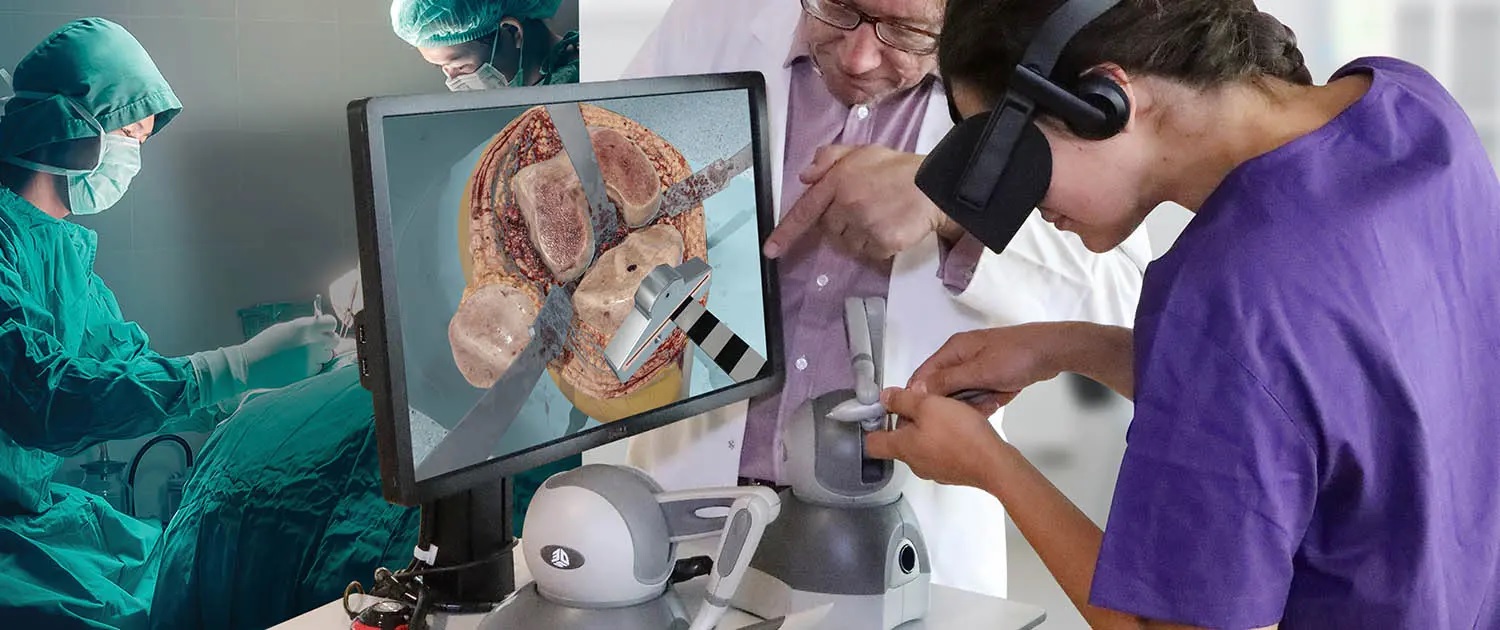Virtual Reality Is Changing the Landscape of Surgical Simulation Training

It’s no secret that technology is changing the way we do just about everything. And the medical field is no exception. Virtual reality has begun to change the landscape of surgical simulation training. VR surgeon simulators provide a realistic and lifelike experience that helps surgeons learn and improve their skills. There are many benefits to VR training over traditional methods, such as cadavers or mannequins. Let’s discuss the differences between VR training and other methods, and how VR surgery simulators are changing the field of surgical simulation training.
How a VR Surgical Simulator Works
A VR surgical simulator is a computer-generated VR environment that simulates a real surgery. The VR headset allows the surgeon to see and interact with the virtual patient just as they would in a real surgery. VR surgical simulators provide realistic haptic feedback, so surgeons can feel the virtual tissues and organs just as they would in a real surgery. VR surgical simulators also provide realistic visual and audio feedback.
Benefits of VR Surgical Simulators
There are many benefits to VR surgeon simulators over traditional methods, such as cadavers or mannequins.
Realism
VR surgical simulators provide a realistic and lifelike experience that helps surgeons learn and improve their skills. When VR surgical simulators are combined with haptic feedback, surgeons can get a realistic sense of how virtual tissue and organs feel. This allows for a more realistic training experience.
Repeatability
VR surgical simulators allow users to repeat surgeries as often as needed without damaging real tissue or causing harm to patients. This allows surgeons to practice new techniques or procedures until they are perfected.
VR surgical simulators also provide realistic visual and audio feedback. This allows surgeons to get a realistic sense of the surgery environment.
Convenience
VR surgical simulators are much more convenient than traditional methods, such as cadavers or mannequins. VR surgical simulators can be set up and used in any location with VR equipment. This allows for training to be done anywhere, at any time.
Cost-Effectiveness
VR surgical simulators are also more cost-effective than traditional methods. VR surgical simulators do not require the use of expensive cadavers or mannequins. VR surgical simulators can also be used for a longer period of time, as they do not wear out like traditional methods.
Training with a VR Surgery Simulator is Better in Every Way
VR surgeon simulators are changing the landscape of surgical simulation training for surgeons everywhere. VR surgery simulators provide a realistic and lifelike experience that helps surgeons learn and improve their skills, and are much more convenient and cost-effective than traditional methods, such as cadavers or mannequins. If you’re a surgeon looking for a new way to train, VR surgical simulators are the way to go.


Comments are closed.